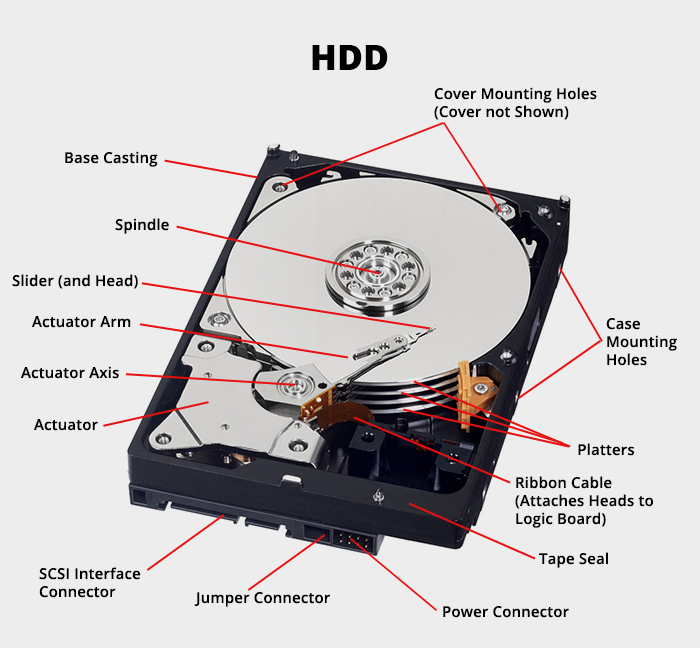Within the current rapidly evolving tech landscape, following the latest advancements can come at a significant cost. Still, knowledgeable tech enthusiasts and budget-conscious consumers are discovering a world of opportunities in excess computer components. Whether you’re constructing a new rig from scratch, enhancing an existing setup, or simply looking for replacement parts, buying surplus can stretch your tech budget without compromising quality.
This guide will support you maneuver through the at times overwhelming market of surplus computer parts. From understanding what to look for in a used motherboard to confirming the reliability of surplus RAM, our comprehensive tips and insights will empower you to make knowledgeable decisions. We will examine how to recognize genuine components, spot great deals, and ultimately build the most optimal system possible without going over budget. We will dive into the ultimate guide to buying surplus computer parts and find out how to unlock amazing value in your tech journey.
Purchasing Extra Technology Items: A Thorough Overview
Regarding optimizing your technology budget, purchasing extra computer items can be a significant advantage. These parts often provide excellent quality, allowing you to upgrade or assemble computers without emptying your wallet. Yet, navigating the extra market requires expertise and a keen insight for quality. Understanding what to search for in these parts can mean the distinction between a good purchase and a expensive error.
One of the first steps in purchasing extra technology components is to get acquainted with the categories and states of components on the market. From circuit boards and CPUs to random access memory and power supplies, it's important to know the details you need is essential. Check reviews and functionality benchmarks to ensure you're picking components that will interact well properly. Researching brands known for quality can also help you choose wisely.
Another vital factor of purchasing excess items is assessing their quality. Always make sure to ask about the usage details and guarantee, if available. Request detailed photos and details of the components to recognize any obvious damage. When possible, testing the components in person before completing a purchase can provide additional reassurance and help make sure you are receiving the greatest return for your purchase.
Key Considerations When Purchasing Used Components
When shopping for second-hand computer components, the primary consideration should be the source. Trustworthy vendors typically offer a warranty or refund policy, which offers peace of mind in case the part does not perform as expected. Find important source with good reviews or endorsements from other technology fans. Additionally, consider exploring online marketplaces and local shops known for dealing in excess parts. This can help ensure that you are getting quality components that are less likely to be counterfeit or broken.
It's also vital to evaluate the physical condition of the components before making a buy. Check for any indicators of wear, such as rust, deterioration, or damage. For parts like graphics cards and mainboards, check any components that may be bulging or leaking. Testing functionality, if possible, is an ideal way to ensure the component functions correctly. If you are unable to test the item on-site, ask the seller about their method of testing and how they ensure the functionality of their used parts.
Lastly, fit must be thoroughly assessed before finalizing a buy. Ensure that the pre-owned parts you are interested in are suitable for your existing system in terms of compatibility with the motherboard, power supply, and other components. Investigate specifications and seek out user experiences to identify potential issues with compatibility. This meticulous approach will help in avoiding pitfalls misconfiguration, ensuring that you optimize the performance and worth of your tech investment.
Testing and Confirming Unused Tech Parts
When buying unused computer parts, it's essential to validate that the parts you acquire are operational and reliable. Commence by visually reviewing each item for evidence of damage, oxidation, or wear. Check for misaligned connectors on CPUs, staining on circuit boards, and any physical irregularities that may suggest previous abuse. A thorough inspection can help you prevent potential issues down the line.
Once you have evaluated the outward state, it's time to check the parts if possible. For components such as GPUs, motherboards, and power supplies, utilize testing equipment and applications to check their performance. Executing performance tests can reveal how the components respond to extended use and their thermal performance. surplus monitors during these examinations can signal you to potential malfunctions, permitting you to make informed judgments.
Finally, checking the fit of excess components with your present setup is essential. Examine specifications and do detailed investigation on part suitability, particularly for mainboards and CPUs, as they have strict criteria regarding interfaces and compatible RAM kinds. Identifying what you need and making sure that each unused component works well with your setup will assist you avoid headaches and maximize your technology budget successfully.

